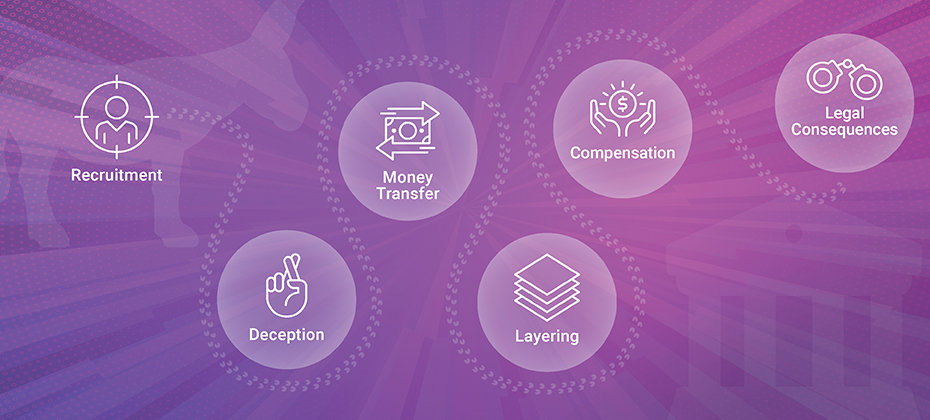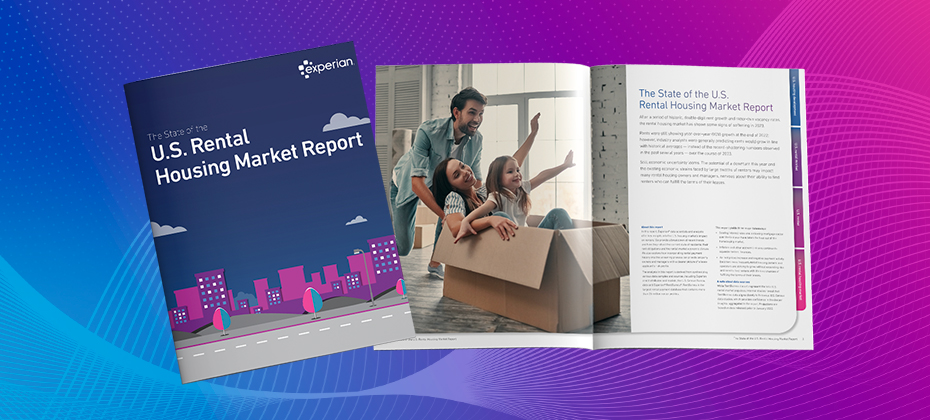Financial Services

While the principle of “trust but verify” might work for personal relationships, “verifying before trusting” is a more appropriate approach for businesses. According to Experian’s 2024 U.S. Identity and Fraud Report, consumers ranked identity theft as their top online security concern. As consumers conduct more activities online, the use of digital identity verification methods is becoming increasingly important. In this article, we explore how a streamlined initial verification process and continual authentication can help you build consumer trust and loyalty, as well as protect your business. What is identity verification? Online identity verification is the process of digitally confirming the identity of a user. Whether you’re reviewing an account application or approving an online transaction, you need to know that the person you’re dealing with is who they claim to be. Technology can help bring traditional identification verification methods online, such as checking a photo ID. Additionally, people and organizations have more digital “fingerprints” than ever before, which digital identity solutions can use to authenticate users with increased accuracy and less friction. What do online identity verification methods help solve? A well-designed and implemented online identity verification process can help address fraud, compliance and customer demands all at once. Verifying someone’s identity when they first create an account could be an important part of the know your customer (KYC) and customer identification program (CIP) requirements. From that moment on, continuous authentication can help detect and prevent fraud. Balancing the need for identity verification with a smooth online experience can be challenging. Customers may abandon a cart if identification requirements aren’t easy and fast, and may look for new services altogether if they’re repeatedly asked to authenticate themselves. But the challenge also presents an opportunity for companies that can leverage online identity verification services and methods to verify users’ identities accurately and discreetly. Examples of online identity verification methods There are multiple ways to verify someone’s identity, but some of the most popular online identity verification methods include: Personally identifiable information. Including their name, address, email address and phone number that can be checked against existing databases. Mobile network operator data. A service that verifies a person’s mobile phone identity. For instance, this can help verify the name, address, device details and other information associated with a phone number. Document verification. There are services that ask consumers to snap and upload a picture of the required document, like a driver’s license, passport, visa or national ID card. These may be verified with 2D or 3D facial recognition with liveness detection (e.g., verifying the user is human) or validating whether the document is real by verifying things like magnetic ink, the machine-readable zone and the barcode are genuine. One-time passwords. A one-time password is sent to a user’s phone or email during an application process to verify that they can access the account or device. Multifactor authentication. A service for existing users who can verify their identity with a combination of different factors, such as a password or biometrics (a method that measures unique physiological characteristics using fingerprints and face recognition). Knowledge-based association questions. These are questions that users answer to verify their identity. The questions may be based on their previous answers to “secret questions” or information from a credit bureau. Behavioral analysis. A service that verifies identity by comparing how a user interacts with a website or app to their previous behavior or an average user’s behavior. Environmental attributes, such as time and location, may also be considered. This technique requires no effort from the consumer. To keep up with increasing consumer and business demand, online identity verification processes may use artificial intelligence and machine learning techniques to complement the digital and manual processes. Some methods, such as consistency checks on a device and behavioral biometric assessments, can also help offer an “invisible” approach to verification. Even small behavioral traits, such as a user’s scrolling style or finger pressure, could be important data points. These invisible methods may be welcomed as a low-friction approach by consumers, who are increasingly aware of the lack of security that comes from only using passwords as an identity verification method. In Experian’s 2024 U.S. Identity and Fraud Report, 71 percent of consumers said physical biometrics are most important for a better online experience, followed by PIN codes sent to a mobile device (70 percent) and behavioral biometrics (66 percent). How Experian can help Experian is a global leader in identity verification and fraud detection services. We offer a layered approach that draws on different verification methods, including credit, device, non-traditional and user-provided data. Step-up authentication can add additional verification requirements based on how risky a user appears or the action they’re trying to take. The approach gives your trusted users a lower-friction experience while helping you detect multiple types of fraud and address CIP discrepancies. At the same time, your customers are assigned a unique and persistent identity, which can give you a single, consolidated view of your customers based on data from different platforms. Using these insights from identity resolution, you can deliver a personalized experience that surprises and delights. Learn more about Experian’s identity verification solutions and Experian VerifyTM. Learn more

This article was originally published on multifamilyinsiders.com One of the challenges currently facing the rental housing industry is the amount of lease application fraud. An Entrata study found a 111% increase in lease application fraud between 2019 and 2020. In the same study, 55% of surveyed apartment managers and rental operators said their properties experience fraudulent lease application attempts every few months, and 15% said their communities were subjected to multiple attempts each month. One-third of respondents described themselves as "very concerned" about application fraud. Just as alarming as the rise in attempts is the apparent likelihood of success. In the study, 65% of apartment managers said they are not confident in their current fraud prevention efforts. Some applicants can use a range of tools to commit fraud such as fake pay stubs, bank statements, employment records, and other falsified documents. Unfortunately, readily available computer technology makes it all too easy for applicants to produce these falsified documents. Tools to fight against fraud Apartment communities that rely on an overly manual screening process may find themselves at a disadvantage in the current landscape. Relying on associates to manually verify things like income and employment history can increase the risk of a deceitful applicant being successful. In addition, these processes can be extraordinarily time-consuming, which means leasing associates have less bandwidth for their many other important duties and responsibilities. Not to mention, the units stay unoccupied while these time-consuming verifications are being done manually. Among the general screening technologies that operators should consider: Automated verification of income, assets and employment — These solutions eliminate the need for operators to collect this kind of documentation from applicants. Furthermore, it eliminates the opportunity for applicants to supply falsified supporting documentation. Frictionless authentication — A multi-layered identity verification process for those applying for rental housing, frictionless authentication detects the subtle and not-so-subtle signs that an applicant is, to one degree or another, using a false identity. By highlighting discrepancies, the process assigns a “score” to quantify the likelihood that misrepresentation is taking place. Additional confirmation of the applicant’s identity can be completed using a one-time passcode (OTP) or knowledge-based authentication (KBA). This technology also uses device intelligence to recognize the risks associated with the physical devices (such as computers, tablets, and smartphones) that consumers use for online applications to identify potential imposters. In today's landscape, apartment owners and operators need to make sure they're protecting themselves against fraudulent applicants, who may not fulfill their financial obligations as outlined in their leases. By embracing the ever-growing array of advanced screening tools and technologies, owners and operators can achieve that protection and reduce their risk significantly — and save their associates time and energy.

Investing in a strong customer acquisition strategy is critical to attracting leads and converting them into high-value customers. In this blog post, we’ll be focusing on one of the first stages of the customer acquisition process: the application stage. Challenges with online customer application processes When it comes to the customer application stage, speed, ease, and convenience are no longer nice-to-haves — they are musts. But various challenges exist for lenders and consumers in terms of online credit or account application processes, including: Limited digital capabilities. Consumers have grown more reliant on digital channels, with 52% preferring to use digital banking options over banking at branches. That said, financial institutions should prioritize the digital customer experience or risk falling behind the competition. The length of applications. Whether it’s a physical or digital application, requiring consumers to provide a substantial amount of information about themselves and their past can be frustrating. In fact, 67% of consumers will abandon an application if they experience complications. Potential human error. Because longer, drawn-out applications require various steps and data inputs, consumers may leave fields blank or make errors along the way. This can create more friction and delays as consumers may potentially be driven offline and into branches to get their applications sorted out. Improve the speed and accuracy of online credit applications Given that consumers are more likely to abandon their applications if their experience is friction-filled, financial institutions will need an automated, data-driven solution to simplify and streamline the online form completion process. Some of the benefits of leveraging an automated solution include: Improved customer experiences. Shortening time-to-value starts with faster decisioning. By using accurate consumer data and automation to prefill parts of the online credit application, you can reduce the amount of information applicants are required to enter, leading to lower abandonment rates, less potential for manual error, and enhanced user experiences. Fraud prevention. Safeguarding consumer information throughout the credit application process is crucial. By leveraging intelligent identity verification solutions, you can securely and compliantly identify consumer identities while ensuring data isn’t released in risky situations. Then by using identity management solutions, you can gain a connected, validated customer view, resulting in minimized end-user friction. Faster approvals. With automated data prefill and identity verification, you can process applications more efficiently, leading to faster approvals and increased conversions. Choosing the right partner Experian can help optimize your customer application process, making it faster, more efficient, and less error prone. This way, you can win more customers and improve digital experiences. Learn more about Experian’s customer acquisition solutions.

Financial institutions have long been on the cutting edge of technology trends, and it continues to be true as we look at artificial intelligence and machine learning. Large analytics teams are using models to solve for lending decisions, account management, investments, and more. However, unlike other industries taking advantage of modeling, financial institutions have the added complexity of regulation and transparency requirements to ensure fairness and explainability. That means institutions need highly sophisticated model operations and a highly skilled workforce to ensure that decisions are accurate and accountability is maintained. According to new research from Experian, we see that while financial institutions plan to use or are using models for a wide range of use cases, there is a range of ModelOps maturity across the industry. Just under half of financial institutions are in the early stages of model building, where projects are more ad-hoc in nature and experimental. Only a quarter of institutions seem to be more mature, where processes are well defined and models can be developed in a reliable timeframe. With more than two-thirds of lenders saying that ModelOps will play a key role in shaping the industry over the next five years, the race to maturity is critical. One of the biggest challenges we see in the space is that it takes too long for models to make it into production. On average, financial institutions estimate that the end-to-end process for creating a new model for credit decisioning takes an average of 15 months. Organizations need to accelerate model velocity, meaning the time that it takes to get a model into production and generating value, to take advantage of this powerful technology. Having the right technology, the right talent, and the right data at the right time continue to drag down operational speed and tracking of models after they are in production. For more information on Experian’s recent study, download the new report ‘Accelerating Model Velocity in Financial Institutions’. We are also hosting an upcoming webinar with tips on how to tackle some of the biggest model development and deployment challenges. You can register for the webinar here.

It's no secret that the banking industry is essential to a thriving economy. However, the nature of the industry makes it prone to various risks that can have significant consequences. Therefore, effective and efficient risk management is vital for mitigating these risks and enhancing the stability of the banking sector. This is where risk management in banking comes in. Let’s look at the importance of risk management in banking and its role in mitigating risks in the industry. What is risk management in banking? Risk management in banking is an approach used by financial institutions to manage risks associated with banking operations. Establishing a structured risk management process is essential to identifying, evaluating and controlling risks that could affect your operations. The process involves developing and implementing a comprehensive risk management framework consisting of several components, including risk assessment, mitigation, monitoring and reporting. Importance of banking risk management Banks face risks from every angle – changing customer behaviors, fraud, uncertain markets, and regulatory compliance, making banking risk management critical for the stability of financial institutions. There are various risks associated with the industry, including: Credit risk: The probability of a financial loss resulting from a borrower's failure to repay a loan, which results in an interruption of cash flows and increased costs for collection. How to mitigate: Leverage advanced analytics, data attributes, and predictive models to improve predictability, manage portfolio risk, make better decisionsand acquire the best customers. Market risk:The likelihood of an investment decreasing in value because of market factors (I.e., changes in interest rates, geopolitical events or recessions). How to mitigate: While it is impossible to eliminate market risk, you can diversify your assets, more accurately determine your risk threshold and stay informed on economic and market conditions. Liquidity risk:The risk that an organization cannot meet its short-term liabilities and financial payment obligations. How to mitigate: More regularly forecast your cash flow and conduct stress tests to determine potential risk scenarios that would cause a loss of liquidity and how much liquidity would be lost in each instance. Operational risk:Potential sources of losses that result from inadequate or failed internal processes (I.e., poorly trained employees, a technological breakdown, or theft of information). How to mitigate: Hire the right staff and adequately train them, stay up to date with cybersecurity threats and automate processes to reduce human error. Reputational risk: The potential that negative publicity regarding business practices, whether true or not, will cause a decline in the customer base, costly litigation or revenue reductions. How to mitigate: Define your bank’s core ethical values and relay them to stakeholders and employees. You should also develop a reputational management strategy and contingency plan in case a reputation-affecting incident occurs. Risk management in banking best practices Successful banks embrace risks while developing powerful mechanisms to prevent or manage them and stay ahead. By taking a proactive approach and leveraging risk management tools, you can minimize losses, enhance stability and grow responsibly. The steps for implementing a banking risk management plan, include: Risk identification and assessment: Financial institutions need to identify potential risks associated with their operations and assess the severity and impact of these risks. Risk mitigation: Once risks have been identified and assessed, financial institutions can implement strategies to mitigate the effects of these risks. There are several strategies for risk mitigation, including risk avoidance, reduction, acceptance and transfer. Risk monitoring and reporting: One of the fundamental principles of a banking risk management strategy is ongoing monitoring and reporting. Financial institutions should continually monitor their operations to identify evolving risks and develop mitigation strategies. Generating reports about the progress of the risk management program gives a dynamic view of the bank’s risk profile and the plan’s effectiveness. Several challenges may arise when implementing a risk management strategy. These include new regulatory rules or amendments, cybersecurity and fraud threats, increased competition in the sector, and inefficient resources and processes. An effective risk management plan serves as a roadmap for improving performance and allows you to better allocate your time and resources toward what matters most. Benefits of implementing a risk management strategy Banks must prioritize risk management to stay on top of the various critical risks they face every day. There are several benefits of taking a proactive approach to banking risk management, including:Improved efficiency: Enhance efficiency and deploy more reliable operations by identifying areas of weakness or inefficiencies in operational processes.Confident compliance: Ensure you comply with new and amended regulatory requirements and avoid costly fines. Enhanced customer confidence: Foster customer confidence to increase customer retention and mitigate reputational risk. Partnering to reduce risk and maximize growth Effective risk management is crucial for mitigating risks in the banking industry. By implementing a risk management framework, financial institutions can minimize losses, enhance efficiency, ensure compliance and foster confidence in the industry. At Experian, we have a team of experts dedicated to supporting our banking partners. Our team’s expertise paired with our innovative solutions can help you implement a powerful risk management process, as well as: Leverage data to reach company-wide business goals. Lower the cost of funds by attracting and retaining deposits. Protect your business against fraud and risk. Create less friction through automated decisioning. Grow your business portfolio and increase profitability. Learn more about our fraud and risk management solutions for banks. Learn more

Money mule fraud is a type of financial scam in which criminals exploit individuals, known as money mules, to transfer stolen money or the proceeds of illegal activities. Money mule accounts are becoming increasingly difficult to distinguish from legitimate customers, especially as criminals find new ways to develop hard-to-detect synthetic identities. How money mule fraud typically works: Recruitment: Fraudsters seek out potential money mules through various means, such as online job ads, social media, or email/messaging apps. They will often pose as legitimate employers offering job opportunities promising compensation or claiming to represent charitable organizations. Deception: Once a potential money mule is identified, the fraudsters use persuasive tactics to gain their trust. They may provide seemingly legitimate explanations like claiming the money is for investment purposes, charity donations or for facilitating business transactions. Money Transfer: The mule is instructed to receive funds to their bank or other financial account. The funds are typically transferred from other compromised bank accounts obtained through phishing or hacking. The mule is then instructed to transfer the money to another account, sometimes located overseas. Layering: To mask the origin of funds and make them difficult to trace, fraudsters will employ layering techniques. They may ask the mule to split funds into smaller amounts, make multiple transfers to different accounts, or use various financial platforms such as money services or crypto. Compensation: The money mule is often promised a percentage of transferred funds as payment. However, the promised monies are lower than the dollars transferred, or sometimes the mule receives no payment at all. Legal consequences: Regardless whether mules know they are supporting a criminal enterprise or are unaware, they can face criminal charges. In addition, their personal information could be compromised leading to identity theft and financial loss. How can banks get ahead of the money mule curve: Know your beneficiaries Monitor inbound paymentsEngage identity verification solutionsCreate a “Mule Persona” behavior profileBeware that fraudsters will coach the mule, therefore confirmation of payee is no longer a detection solution Educate your customers to be wary of job offers that seem too good to be true and remain vigilant of requests to receive and transfer money, particularly from unknown individuals and organizations. How financial institutions can mitigate money mule fraud risk When new accounts are opened, a financial institution usually doesn’t have enough information to establish patterns of behavior with newly registered users and devices the way they can with existing users. However, an anti-fraud system should catch a known behavior profile that has been previously identified as malicious. In this situation, the best practice is to compare the new account holder’s behavior against a representative pool of customers, which will analyze things like: Spending behavior compared to the averagePayee profileSequence of actionsNavigation data related to machine-like or bot behaviorAbnormal or risky locationsThe account owner's relations to other users The risk engine needs to be able to collect and score data across all digital channels to allow the financial institution to detect all possible relationships to users, IP addresses and devices that have proven fraud behavior. This includes information about the user, account, location, device, session and payee, among others. If the system notices any unusual changes in the account holder’s personal information, the decision engine will flag it for review. It can then be actively monitored and investigated, if necessary. The benefits of machine learning This is a type of artificial intelligence (AI) that can analyze vast amounts of disparate data across digital channels in real time. Anti-fraud systems based on AI analytics and predictive analytics models have the ability to aggregate and analyze data on multiple levels. This allows a financial institution to instantly detect all possible relationships across users, devices, transactions and channels to more accurately identify fraudulent activity. When suspicious behavior is flagged via a high risk score, the risk engine can then drive a dynamic workflow change to step up security or drive a manual review process. It can then be actively monitored by the fraud prevention team and escalated for investigation. How Experian can help Experian’s fraud prevention solutions incorporate technology, identity-authentication tools and the combination of machine learning analytics with Experian’s proprietary and partner data to return optimal decisions to protect your customers and your business. To learn more about how Experian can help you leverage fraud prevention solutions, visit us online or request a call

As 2023 unfolds, rental housing owners and operators find themselves faced with a slightly different market than in the recent past. While rents are still high, rent growth has slowed somewhat, and the prospect of a cooler U.S. economy means more renters could be facing economic hardships in the months ahead. So, who is today's renter? In The State of the U.S. Rental Housing Market, a new report from Experian, we uncover that today’s renters are typically younger. According to our data derived from Experian RentBureau® and our analysis, 68.8% of today’s renters are either millennials (41.8%) or Gen Z (27%). Meanwhile, 17.3% are Gen X, 11.9% are baby boomers and only 2.2% are from the Silent Generation. Similarly, when you look at the renters who have a higher propensity to move — and thus need a new apartment or home to rent — they tend to skew younger. Our analysis shows that, of the renters who made two or more moves during the last two years, 43.2% were Gen Y (millennials). The younger Gen Y segment accounts for 25.2% of the frequent movers. As the population of renters has increased over the past decade, the concentration of growth appears to be among households earning $75,000 or more in annual income. About 7.6 million of these households were renters in 2009; by 10 years later, that figure had increased to 11.2 million. What is their financial status? Also, by some measurements, U.S. consumers — and, by extension, renters — improved their financial standing during the pandemic era. Credit scores rose as consumers used stimulus payments to pay down debt and save, but this trend is starting to normalize. The median conventional credit score rose above 700 in 2022, up from just above 680 in 2019. Still, according to Experian RentBureau, 63% of all renter households are low- to moderate-income earners, meaning they make less than 80% of the area median income. Furthermore, the average renter spends 38.6% of their income on rent. Households that spend more than 30% of their income on housing costs — including rent or mortgage payments, utilities and other fees — are considered “housing cost burdened” by the U.S. Department of Housing and Urban Development. For more insight and analysis of today’s rental-housing market, click here to download your free copy of The State of the U.S. Rental Housing Market report.

After a period of historic, double-digit rent growth and razor-thin vacancy rates, the rental housing market has shown some signs of softening in recent months. And economic uncertainty still looms. The potential of a downturn this year and the existing economic strains faced by large swaths of renters may impact many rental-housing owners and managers nervous about their ability to find renters who can fulfill their lease terms. In The State of the U.S. Rental Housing Market, a new report from Experian, our data scientists and analysts offer key insights into the U.S. housing market and its impact on renters. The analysis in this report is derived from synthesizing various data samples and sources, including Experian credit attributes and models as well as data from the U.S. Census Bureau and Experian RentBureau®. Experian RentBureau is the largest rental payment database and contains over 4.4 million transactions and more than 25 million renter profiles. This report yields three major takeaways: Soaring interest rates and a slowing mortgage sector over the last year have taken heat out of the homebuying market, leading to more renters remaining in the renter pool. Inflation and other economic strains continue to squeeze renters’ finances. As rent prices increase and negative payment activity becomes more frequent, rental-housing owners and operators are striving to grow without expanding default risk and need to find renters with the best chances of fulfilling the terms of their leases. Among the report’s other notable findings: The average renter spends 38.6% of their income on rent. Households that spend more than 30% of their income on housing costs — including rent or mortgage payments, utilities and other fees — are considered “housing cost burdened” by the U.S. Department of Housing and Urban Development. Experian data shows 28% of renters with negative payment activity in 2022 (negative payment activity is defined as having late charges, insufficient funds, write-offs or outstanding balances). The figure represented an increase of 5.7 percentage points from 2021 and 3.8 percentage points from 2020. Also of note, low-to-moderate income renters are twice as likely to have a negative payment activity compared to other renters. Rent-to-income ratios are highest in the West and the Northeast. Among all 50 states, the leaders are Washington D.C. (40.9%), California (39.7%), Washington state (35.6%), Utah (35.6%) and New York (35.3%). Keep pace with trends in future blog posts that will dive deeper into the current conditions affecting the rental housing market and renters. In the meantime, click here to download your free copy of The State of the U.S. Rental Housing Market Report in full.

Evolving technologies and rising consumer expectations for fast, frictionless experiences highlight an opportunity for credit unions to advance their decisioning and stand out in a crowded market. How a credit union is optimizing their decision-making process With over $7.2 billion in assets and 330,000 members, Michigan State University Federal Credit Union (MSUFCU) aims to provide superior service to their members and employees. Initially reliant on manual reviews, the credit union needed a well-designed decisioning strategy that could help them grow their loan portfolio, increase employee efficiency, and reduce credit risk. The credit union implemented Experian’s decisioning platform, PowerCurve® Originations, to make faster, more accurate credit decisions on their secured and unsecured personal loans, leading to increased approvals and an exceptional member experience. “Day one of using PowerCurve produced a 49% automation rate! We have received amazing feedback from our teams about what a great product was chosen,” said Blake Johnson, Vice President of Lending, Michigan State University Federal Credit Union. After implementing PowerCurve Originations, MSUFCU saw an average monthly automation rate of more than 55% and decreased their application processing time to less than 24 hours. Read the full case study for more insight on how Experian can help power your decisioning to grow your business and member relationships. Download case study

The ability to verify customer identities is essential for financial institutions for numerous reasons: regulatory requirements, for the protection of their consumers and their business, mitigating risk and more. Being able to detect high-risk customers and large transactions is a critical component of Know Your Customer (KYC) strategies. In addition to being good business practices, this type of risk mitigation is also outlined in industry regulations. In an increasingly complex regulatory environment, companies may be faced with meeting multiple KYC and Anti-Money Laundering (AML) requirements. Actions taken to validate customers such as enhanced due diligence in KYC compliance have impacts spanning far beyond just regulatory compliance. As with any business, bottom line and budget are primary drivers for many financial institutions. Enhanced due diligence (EDD) can positively impact a business's bottom line by contributing to the reduction of fraud rates. And with increased security to discover potential fraudsters, organizations can protect both customers and reputational value. Enhanced due diligence explained: Why KYC, CIP and AML are critical in financial services EDD takes Customer Due Diligence (CDD) to the next level. Financial institutions conduct CDD to protect their organizations from financial crime. CDD is also a critical component of KYC steps to comply with AML laws. AML legislation requires financial institutions to validate their customers to ensure they aren’t part of explicitly illegal financial activity or funding terrorism. EDD is, as it sounds, a more involved form of due diligence, which encompasses additional procedures. EDD involves determining a customer’s risk, often requiring additional information and evidence to determine their viability. While CDD is performed on all customers, EDD is reserved for high-risk potential customers. Because EDD is often more costly and involved in terms of time and resources, a risk-based approach is recommended to flag only the instances when this additional level of validity is required. KYC references the mandatory process of identifying and verifying a client’s identity at account opening and over the course of their relationship with a company to ensure they are the person they say they are. KYC consists of three parts: Customer identification program (CIP), CDD and EDD. CIP requires, at minimum, that financial institutions provide four pieces of identifying information including name, date of birth, address and identification number. CDD consists of classifying the identifying information that was collected. After identifying who the client is (via CIP), CDD assesses the information to determine risk. Enhanced due diligence in KYC In order to establish a competent EDD program, you must improve your CIP and KYC programs. Objective, automated and efficient identity verification capabilities help you acquire profitable, legitimate customers and monitor them effectively over time to meet regulatory compliance expectations. How can EDD benefit your business? Failing to comply with EDD regulations can result in countless risks for financial institutions like fines and reputational losses. While many customers pose little to no risk, high-risk individuals must be flagged quickly and efficiently. The primary benefit of EDD is to protect both financial institutions and their customers from financial crimes such as money laundering and terrorist financing, but there are other risks as well. By mitigating potential risks associated with higher-risk customers, EDD can prevent financial institutions from incurring regulatory fines, legal action, and damage to their reputation. In turn, this ensures that customers have more trust in their financial service providers. Financial institutions can then gain a competitive advantage by offering more secure financial products and services that investors, businesses and customer demand. Access EDD from Experian Experian leverages our advanced analytics, reliable data sources, and team of experts to conduct objective, full and comprehensive due diligence with confidence and certainty. Our solutions, including flexible monitoring and segmentation tools, allow you to resolve discrepancies and fraud risk in a single step, all while keeping pace with emerging fraud threats with effective customer identification software. Improving your Customer Identification Program (CIP) and KYC programs In conclusion, Enhanced Due Diligence in KYC, CIP, and AML are critical components of the financial services regulatory compliance framework. EDD goes beyond the standard KYC, CIP, and AML checks to mitigate risks associated with higher-risk customers. Implementing EDD can help financial institutions comply with regulatory requirements, protect against potential risks, and prevent financial crimes. Ultimately, this benefits not only the institutions but also their customers and the broader economy. It’s vital that financial institutions understand and appreciate the importance of EDD and take appropriate measures to implement it effectively. Experian offers objective, automated and efficient identity verification solutions to help you acquire profitable, legitimate customers and monitor them over time to meet regulatory compliance expectations. Discover the power of CIP and KYC solutions. Learn more

More than half of U.S. businesses say they discuss fraud management often, making fraud detection in banking top-of-mind. Banking fraud prevention can seem daunting, but with the proper tools, banks, credit unions, fintechs, and other financial institutions can frustrate and root out fraudsters while maintaining a positive experience for good customers. What is banking fraud? Banking fraud is a type of financial crime that uses illegal means to obtain money, assets, or other property owned or held by a bank, other financial institution, or customers of the bank. This type of fraud can be difficult to detect when misclassified as credit risk or written off as a loss rather than investigated and prevented in the future. Fraud that impacts financial institutions consists of small-scale one-off events or larger efforts perpetrated by fraud rings. Not long ago, many of the techniques utilized by fraudsters required in-person or phone-based activities. Now, many of these activities are online, making it easier for fraudsters to disguise their intent and perpetrate multiple attacks at once or in sequence. Banking fraud can include: Identity theft: When a bad actor steals a consumer’s personal information and uses it to take money, open credit accounts, make purchases, and more. Check fraud: This type of fraud occurs when a fraudster writes a bad check, forges information, or steals and alters someone else’s check. Credit card fraud: A form of identity theft where a bad actor makes purchases or gets a cash advance in the name of an unsuspecting consumer. The fraudster may takeover an existing account by gaining access to account numbers online, steal a physical card, or open a new account in someone else’s name. Phishing: These malicious efforts allow scammers to steal personal and account information through use of email, or in the case of smishing, through text messages. The fraudster often sends a link to the consumer that looks legitimate but is designed to steal login information, personally identifiable information, and more. Direct deposit account fraud: Also known as DDA fraud, criminals monetize stolen information to open new accounts and divert funds from payroll, assistance programs, and more. Unfortunately, this type of fraud doesn’t just lead to lost funds – it also exposes consumer data, impacts banks’ reputations, and has larger implications for the financial system. Today, top concerns for banks include generative AI (GenAI) fraud, peer-to-peer (P2P) payment scams, identity theft and transaction fraud. Without the proper detection and prevention techniques, it’s difficult for banks to keep fraudsters perpetrating these schemes out. What is banking fraud prevention? Detecting and preventing banking fraud consists of a set of techniques and tasks that help protect customers, assets and systems from those with malicious intent. Risk management solutions for banks identify fraudulent access attempts, suspicious transfer requests, signs of false identities, and more. The financial industry is constantly evolving, and so are fraudsters. As a result, it’s important for organizations to stay ahead of the curve by investing in new fraud prevention technologies. Depending on the size and sophistication of your institution, the tools and techniques that comprise your banking fraud prevention solutions may look different. However, every strategy should include multiple layers of friction designed to trip up fraudsters enough to abandon their efforts, and include flags for suspicious activity and other indicators that a user or transaction requires further scrutiny. Some of the emerging trends in banking fraud prevention include: Use of artificial intelligence (AI) and machine learning (ML). While these technologies aren’t new, they are finding footing across industries as they can be used to identify patterns consistent with fraudulent activity – some of which are difficult or time-consuming to detect with traditional methods. Behavioral analytics and biometrics. By noting standard customer behaviors — e.g., which devices they use and when — and how they use those devices — looking for markers of human behavior vs. bot or fraud ring activity — organizations can flag riskier users for additional authentication and verification. Leveraging additional data sources. By looking beyond standard credit reports when opening credit accounts, organizations can better detect signs of identity theft, synthetic identities, and even potential first-party fraud. With real-time fraud detection tools in place, financial institutions can more easily identify good consumers and allow them to complete their requests while applying the right amount and type of friction to detect and prevent fraud. How to prevent and detect banking fraud In order to be successful in the fight against fraud and keep yourself and your customers safe, financial institutions of all sizes and types must: Balance risk mitigation with the customer experience Ensure seamless interactions across platforms for known consumers who present little to no risk Leverage proper identity resolution and verification tools Recognize good consumers and apply the proper fraud mitigation techniques to riskier scenarios With Experian’s interconnected approach to fraud detection in banking, incorporating data, analytics, fraud risk scores, device intelligence, and more, you can track and assess various activities and determine where additional authentication, friction, or human intervention is required. Learn more

Credit risk refers to the likelihood that a borrower will fail to repay a debt as agreed. Credit risk management is the art and science of utilizing risk mitigation tools to minimize losses while maximizing profits from lending activities. Lenders can establish credit underwriting criteria for each of their products and utilize risk-based pricing to adjust the terms of a loan or line of credit based on the risk associated with the product and borrower. Credit portfolio management extends beyond originations and individual decisions to encompass portfolios as a whole. Why is credit risk management important? Continuously managing credit risk matters because there's always a balancing act. Tightening a credit box – using more restrictive underwriting criteria – might reduce credit losses. However, it can also decrease approval rates, excluding borrowers who would have repaid as agreed. Expanding a credit box might increase approval rates, but it is only beneficial if the profit from good new loans exceeds credit losses. Fraud is also on the rise and becoming increasingly complex, making fraud management a crucial part of understanding risk. For instance, with synthetic identity fraud, fraudsters might “age an account" or make on-time payments before “busting out” or maxing out a credit card, and then abandoning the account. If you examine payment activity alone, it may be challenging to classify the loss as either a fraud loss or a credit loss. Additionally, external economic forces and consumer behavior are constantly in flux. Financial institutions need effective consumer risk management and to adjust their strategies to minimize losses. And they must dynamically adjust their underwriting criteria to account for these changes. You could be pushed off balance if you don't react in time. What does managing credit risk entail? Lenders have used the five C’s of credit to measure credit risk and make lending decisions for decades: Character: The likelihood a borrower will repay the loan as agreed, often measured by analyzing their credit report and a credit risk score. Capacity: The borrower's ability to pay, which lenders might measure by reviewing their outstanding debt, income, and debt-to-income ratio. Capital: The borrower's commitment to the purchase, such as their down payment when buying a vehicle or home. Collateral: The value of the collateral, such as a vehicle or home, for an auto loan or mortgage. Conditions: The external conditions that can impact a borrower's ability to afford payments, such as broader economic trends. Credit risk management considers these within the context of a lender’s goals and its specific lending products. For example, capital and collateral aren't relevant for unsecured personal loans, which makes character and capacity the primary drivers of a decision. Credit risk management best practices at origination Advances in analytics, computing power and real-time access to additional data sources are helping lenders better measure some of the C’s. For example, credit risk scores can more precisely assess character for a lender's target market than generic risk scores. Open banking data enables lenders to more accurately assess a borrower's capacity by directly analyzing their cash flows. With these advances in mind, leading lenders: View underwriting as a dynamic process: Lenders have always had to respond to changing forces, and the pandemic highlighted the need to be nimble. Consider how you can utilize analytical insights to quickly adjust your strategies. Test the latest credit risk modeling techniques: Artificial intelligence (AI) and machine learning (ML) techniques can improve credit risk model performance and drive automated credit risk decisioning. Use multiple data sources: Alternative credit data and consumer-permissioned data offer increased and real-time visibility into borrowers' creditworthiness to help lenders more accurately assess credit risk. These additional data sources can score those who are unscoreable by conventional models and help fuel ML credit risk models. Experian helps lenders measure and manage credit risk Experian is a leading provider of traditional credit data, alternative credit data and credit risk analytics. For those who want to quickly benefit from the latest technological advancements, our Lift Premium credit risk model utilizes both traditional and alternative data to score up to 96 percent of U.S. consumers — compared to the 81 percent that conventional models can score.¹ Experian’s Ascend Platform and Ascend Intelligence Services™ can help lenders develop, deploy and monitor custom credit risk models to optimize their decisions. With end-to-end platforms, our account and portfolio management services can help you limit risk, detect fraud, automate underwriting and identify opportunities to grow your business. Learn more about credit risk management ¹Experian (2023). Lift Premium™ and Lift Plus™

Experian’s eighth annual identity and fraud report found that consumers continue to express concerns with online security, and while businesses are concerned with fraud, only half fully understand its impact – a problem we previously explored in last year’s global fraud report. In our latest report, we explore today’s evolving fraud landscape and influence on identity, the consumer experience, and business strategies. We surveyed more than 2,000 U.S. consumers and 200 U.S. businesses about their concerns, priorities, and investments for our 2023 Identity and Fraud Report. This year’s report dives into: Consumer concerns around identity theft, credit card fraud, online privacy, and scams such as phishing.Business allocation to fraud management solutions across industries.Consumer expectations for both security and their experience.The benefits of a layered solution that leverages identity resolution, identity management, multifactor authentication solutions, and more. To identify and treat each fraud type appropriately, you need a layered approach that keeps up with ever-changing fraud and applies the right friction at the right time using identity verification solutions, real-time fraud risk alerts, and enterprise orchestration. This method can reduce fraud risks and help provide a more streamlined, unified experience for your consumers. To learn more about our findings and how to implement an effective solution, download Experian’s 2023 Identity and Fraud Report. Download the report

In a changing economy, banks of all sizes are more budget conscious, leading many to pull back on their marketing spend for new customer acquisition. But by making strategic marketing moves now, banks can uncover new opportunities and drive profitable, long-term growth. So, how can you find, engage, and win over high-value customers? Know who’s in the market for credit To build an effective bank customer acquisition strategy, you’ll want to be proactive with your campaign planning. Let’s say you’ve already defined your customer profile and have insights into their interests, lifestyles, and demographics. With predictive metrics and advanced tools like trended data and propensity-to-open models, you can further refine your segmentation strategies by identifying individuals who are likely to be in the market for your product. This way, you can reach consumers at the right time and personalize offers to achieve higher open rates. Embrace the digital era With today’s consumers increasing their banking activities online, leveraging digital channels in your bank customer acquisition strategy is imperative. In addition to connecting with consumers through direct mail, consider reaching out to them through email, social media, or your mobile banking applications. This will not only help increase the visibility of the offer, but also allow consumers to receive and respond faster. Another way to enhance your banking strategies for growth while meeting consumer expectations for digital is by making it easier and more convenient for consumers to onboard. With an automated and data-driven credit decisioning solution, you can streamline steps that are traditionally manual and time-consuming, such as data collection and identity verification. By providing seamless customer acquisition in banking, you can accelerate your decision-making and increase the likelihood of conversion. Make the most of your marketing spend While customer acquisition in banking should remain a high priority, we understand that driving growth on a tight marketing budget can be challenging. That’s why we created a tip sheet outlining ways for banks and other lenders to enhance their customer acquisition processes while effectively managing costs. Some of the tips include: Going beyond conventional scoring methods. By leveraging an advanced customer acquisition solution, you can gain a holistic view of your prospective customers to enhance predictive performance and identify hidden growth opportunities. Focusing on high-potential customers. Pinpointing consumers who are actively seeking credit enables you to focus your offers and resources on those who are likely to respond, resulting in a greater return on marketing investment. Amplifying your credit offers. Re-presenting preapproved credit offers through the digital channels that consumers most frequent enables you to expand your campaign reach, increase response rates, and reduce direct mailing costs. View the tip sheet to learn how you can make the most of your marketing budget to acquire new customers and drive long-term growth. Access tip sheet

After being in place for more than three years, the student loan payment pause is scheduled to end 60 days after June 30, with payments resuming soon after. As borrowers brace for this return, there are many things that loan servicers and lenders should take note of, including: Potential risk factors demonstrated by borrowers. About one in five student loan borrowers show risk factors that suggest they could struggle when scheduled payments resume.1 These include pre-pandemic delinquencies on student loans and new non-medical collections during the pandemic. The impact of pre-pandemic delinquencies. A delinquent status dating prior to the pandemic is a statistically significant indicator of subsequent risk. An increase in non-student loan delinquencies. As of March 2023, around 2.5 million student loan borrowers had a delinquency on a non-student loan, an increase of approximately 200,000 borrowers since September 2022.2 Transfers to new servicers. More than four in ten borrowers will return to repayment with a new student loan servicer.3 Feelings of anxiety for younger borrowers. Roughly 70% of Gen Z and millennials believe the current economic environment is hurting their ability to be financially independent adults. However, 77% are striving to be more financially literate.4 How loan servicers and lenders can prepare and navigate Considering these factors, lenders and servicers know that borrowers may face new challenges and fears once student loan payments resume. Here are a few implications and what servicers and lenders can do in response: Non-student loan delinquencies can potentially soar further. Increased delinquencies on non-student loans and larger monthly payments on all credit products can make the transition to repayment extremely challenging for borrowers. Combined with high balances and interest rates, this can lead to a sharp increase in delinquencies and heightened probability of default. By leveraging alternative data and attributes, you can gain deeper insights into your customers' financial behaviors before and during the payment holidays. This way, you can mitigate risk and improve your lending and servicing decisions. Note: While many student loan borrowers have halted their payments during forbearance, some have continued to pay anyway, demonstrating strong financial ability and willingness to pay in the future. Trended data and advanced modeling provide a clearer, up-to-date view of these payment behaviors, enabling you to identify low-risk, high-value customers. Streamlining your processes can benefit you and your customers. With some student loan borrowers switching to different servicers, creating new accounts, enrolling in autopay, and confirming payment information can be a huge hassle. For servicers that will have new loans transferred to them, the number of queries and requests from borrowers can be overwhelming, especially if resources are limited. To make transitions as smooth as possible, consider streamlining your administrative tasks and processes with automation. This way, you can provide fast and frictionless service for borrowers while focusing more of your resources on those who need one-on-one assistance. Providing credit education can help borrowers take control of their financial lives. Already troubled by higher costs and monthly payments on other credit products, student loan payments are yet another financial obligation for borrowers to worry about. Some borrowers have even stated that student loan debt has delayed or prevented them from achieving major life milestones, such as getting married, buying a home, or having children.5 By arming borrowers with credit education, tools, and resources, they can better navigate the return of student loan payments, make more informed financial decisions, and potentially turn into lifelong customers. For more information on effective portfolio management, click here. 1Consumer Financial Protection Bureau. (June 2023). Office of Research blog: Update on student loan borrowers as payment suspension set to expire. 2Ibid. 3Ibid. 4Experian. (May 2023). Take a Look: Millennial and Gen Z Personal Finance Trends 5AP News. (June 2023). The pause on student loan payment is ending. Can borrowers find room in their budgets?